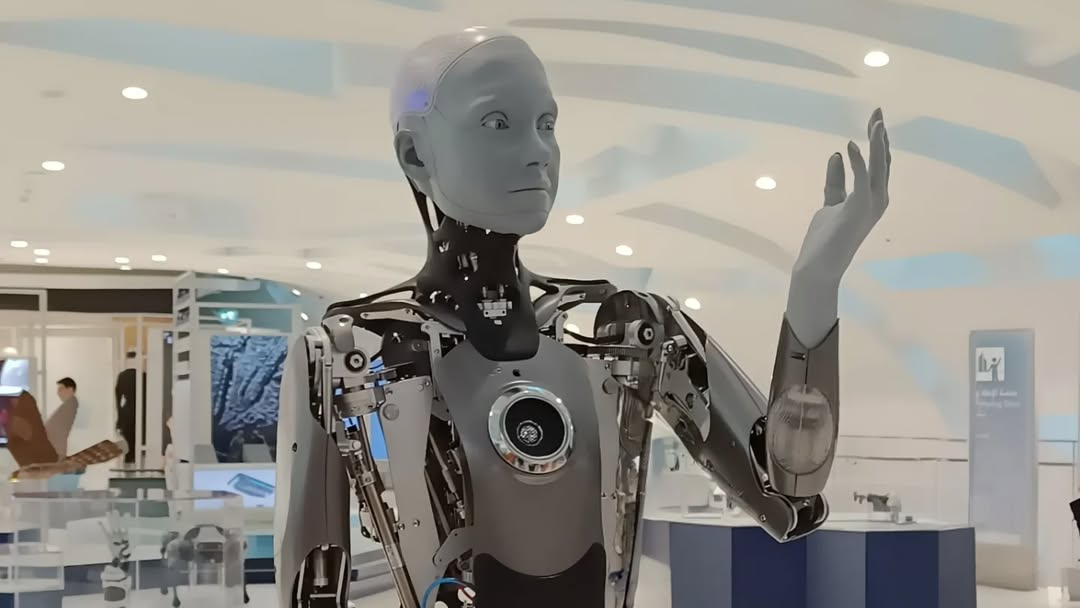Humanoid Robots: The Next Trillion-Dollar Frontier in AI
Cathie Wood’s Bold Claim and the Coming AI Shift
When Cathie Wood, CEO of ARK Invest, told CNBC that humanoid robots will be “the biggest of all AI opportunities,” she wasn’t making a casual prediction — she was staking a claim in what could become the next trillion-dollar market.
As the global economy adjusts to automation and AI saturation, “embodied intelligence” — AI that moves, manipulates, and interacts with the physical world is quickly emerging as the next growth frontier. And at the centre of this transformation is 1X Technologies, a Norwegian-American robotics firm backed by OpenAI and now turning heads with its upcoming NEO humanoid robot.
From Algorithms to Arms and Legs: Why Humanoids Matter
While generative AI reshaped digital industries, humanoid robots are redefining what AI can do in the real world. Designed to walk, carry, and assist humans, these machines combine advanced machine learning with robotics creating what Wood calls “AI’s most scalable platform yet.”
“Humanoid robots could be the most profound productivity driver we’ve seen in decades,” said Cathie Wood in a CNBC interview. “We believe they’ll transform not just manufacturing but household labour and service industries too.”
The implications for global business are massive. Think logistics warehouses that never close, homes supported by robot assistants, and corporations slashing labour costs through robotic efficiency.
Meet NEO: The Home Robot Ready to Work
At the heart of this new movement is NEO, the sleek, 66-pound humanoid from 1X Technologies, set to enter homes in 2026.
NEO is priced at around $20,000, or $499 per month on subscription, reflecting a shift toward “robots-as-a-service” — a model blending SaaS economics with physical automation.
Currently, many of NEO’s tasks from loading dishwashers to folding laundry require remote human assistance. However, 1X CEO Bernt Øyvind Børnich told Fast Company that each robot’s performance helps train future models:
“Our goal is not just to build one robot that works, but millions that learn together. Every household becomes a training ground.”
The firm expects to scale production into the tens of thousands by the late 2020s, with heavy backing from major AI investors including OpenAI’s Startup Fund and Tiger Global.
The Finance of the Future: Investing in Embodied AI
For investors and executives, humanoid robotics represents both high potential and high complexity. According to ARK Invest’s latest report, the humanoid robotics market could exceed $10 trillion globally within the next two decades, outpacing autonomous vehicles and even cloud computing in market opportunity.
Corporate adoption will likely follow a leasing model — similar to enterprise software. Businesses will rent humanoids for logistics, healthcare, or retail roles, paying monthly fees that combine hardware depreciation with AI learning upgrades.
Dr. Sven Beiker, managing director at Silicon Valley Mobility and former McKinsey analyst, told Business Insider:
“This is a convergence moment. Humanoid robots turn AI from a cost-saving tool into a revenue-generating platform.”
Legal and Ethical Challenges Ahead
As humanoid robots move from labs to living rooms, legal questions abound:
-
Who’s liable if a household robot malfunctions or injures someone?
-
Who owns the data collected by AI systems operating in private homes?
-
How will employment law evolve as service robots replace or assist human labour?
Tech law experts argue that regulation will need to evolve fast. Europe is already proposing new AI safety directives, while the U.S. Federal Trade Commission has hinted at “consumer transparency obligations” for service robots. For now, companies like 1X must balance innovation with responsibility — a tension that will define the coming decade of AI deployment.
What It Means for CEOs and Investors
For senior executives, humanoid robotics isn’t just another tech trend — it’s a future business infrastructure. From manufacturing to domestic service, embodied AI has the potential to reshape productivity, supply chains, and asset value on a scale not seen since industrial automation.
The financial race is underway: whoever can combine scalable design, low energy consumption, and human-safe autonomy will dominate the next industrial revolution.
FAQ: The Rise of Humanoid Robots — What You Need to Know
1. What are humanoid robots?
Humanoid robots are AI-powered machines designed to replicate human movement and interaction — from walking to carrying objects. Unlike industrial robots, they’re built to operate safely in human environments.
2. Why does Cathie Wood believe humanoids are the “biggest AI opportunity”?
Wood predicts that humanoid robots will unlock massive productivity gains across global industries — generating trillions in value by combining physical labour with artificial intelligence.
3. What is the NEO robot, and who makes it?
NEO is a home-assistant humanoid created by 1X Technologies, a company backed by OpenAI. It’s slated for release in 2026 and will cost around $20,000, or $499/month via subscription.
4. How might this affect jobs?
While humanoid robots could reduce demand for manual labour, they may also create new roles in AI maintenance, robotics design, and ethical oversight. Analysts see it as a shift, not a collapse, in employment.
5. Are there any legal risks?
Yes — product liability, privacy protection, and consumer safety laws will need updating. Governments are already considering frameworks to regulate AI-driven robotics in personal and commercial spaces.
6. What’s the investment outlook?
ARK Invest forecasts that humanoid robotics could become a $10 trillion sector by 2045, with early investors in robotics startups seeing exponential returns as production scales.
The Bottom Line
Humanoid robots aren’t just another gadget — they’re the embodiment of AI’s next leap. For executives and investors alike, the opportunity lies not only in automation but in transformation: industries that once depended on digital code will soon rely on mechanical intelligence.
The age of humanoid AI has arrived — and it’s about to walk straight into our homes, offices, and balance sheets.














